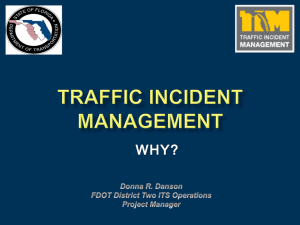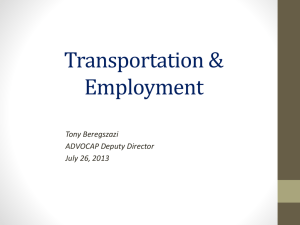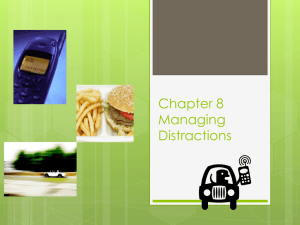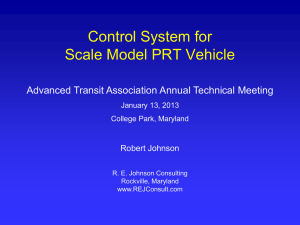Legal/Liability Issues and Safety Policies/Procedures
advertisement
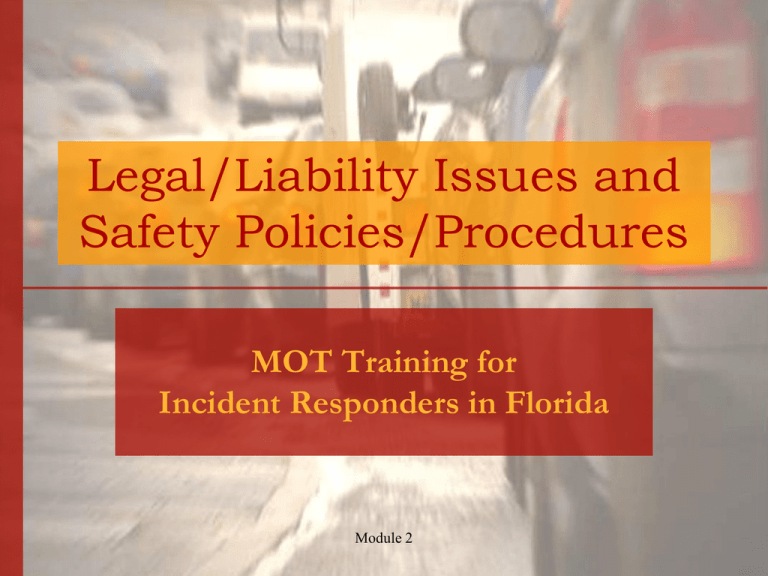
Legal/Liability Issues and Safety Policies/Procedures MOT Training for Incident Responders in Florida Module 2 Legal & Liability Issues Module 2 Objectives Provide incident responders with information on tort liability and guidelines to protect themselves from liability. Module 2 Incident Responder Duties • Perform your duties as safely as possible. • Minimize the chance or probability of injury to your fellow man. • Maintain and provide our roadways in a safe condition. • Shield motorists from undue hazards. • Return to your home safely every night. Module 2 Legal Action Can legal action be taken against a government agency? Module 2 Who can be sued? • • • • • • • • Federal Government State Government County & City Governments Contractors Government Employees Utility Companies Individual Workers Almost anyone Module 2 Tort Liability Government agencies, contracting individuals who are engaged in working on our streets and interstate highways, are subject to legal action under the law of Tort Liability. Module 2 Elements Necessary for Every Tort Action • Defendant must have a duty to perform. • Defendant must have failed to responsibly perform his/her duty. • Defendant’s failure (negligence) was directly responsible for the injury or damage. • Plaintiff was not guilty of contributing to the cause of the incident. • Plaintiff incurred damages resulting from the incident. Module 2 How to Protect Yourselves • Properly install traffic controls at incident sites. • Properly use emergency warning lights and arrow boards. • Perform your duties in accordance with the techniques learned through the training course and on-the-job training. • Perform your duties as a professional. Module 2 Safety Policies & Procedures Module 2 Florida Statutes • • • • • 316.061 316.072 316.126(1)(b) 316.1945 768.13 Module 2 Florida Statute 316.061 • Move It – It’s the Law • Crashes involving damage to vehicle or property • If a damaged vehicle is obstructing traffic – the driver of such vehicle must make every reasonable effort to move the vehicle or have it moved so as not to block the regular flow of traffic. • Employees or authorized agents – may undertake the removal from the main traveled way of roads on its highway system of all vehicles incapacitated as a result of a motor vehicle crash … Module 2 Read Statute 316.061 Florida Statute 316.072 • Obedience to and effect of traffic laws • The driver of an authorized emergency vehicle, except when otherwise directed by a police officer, may: – Park or stand, irrespective of any provision – Pass a red signal or stop sign, only after slowing down as may be necessary for safe operation – Exceed the maximum speed limits and disregard direction or movement or turning in specified location, as the driver does not endanger life or property Module 2 Read Statute 316.072 Florida Statute 316.126(1)(b) • Move Over Act • Operation of vehicles and actions of pedestrians on approach of authorized emergency vehicle. • The “Move Over Act” requires motorists to approach cautiously when an emergency vehicle is stopped ahead with its lights flashing. Module 2 Read Statute 316.126 Florida Statute 316.1945 • Stopping, standing, or parking prohibited in specified places • A vehicle may not be parked in excess of 6 hours on the roadway or shoulder of a limited access facility – This provision is not applicable to a person stopping a vehicle to render aid to an injured person or assistance to a disabled vehicle in obedience to the directions of a law enforcement officer or to a person stopping a vehicle in compliance with applicable traffic laws. Module 2 Read Statute 316.1945 Florida Statute 768.13 • Good Samaritan Act - immunity from civil liability • Any person who gratuitously and in good faith renders emergency care or treatment shall not be held liable for any civil damages. Module 2 Read Statute 768.13 Good Samaritan Act How many of you have worked as a “good Samaritan” providing help to victims when you are out off duty? • Keep witnesses at the incident scene • Provide help according to your capabilities Module 2 Standards of Care • Reasonable safety under the given circumstances • Keep the roads reasonably safe for all motorists Module 2 Source: TASC MOT Intermediate Level Training Course Standards of Care (cont.) • Where a hazardous condition exists that can be removed, the reasonableness of the risk of harm is measured by the following factors: – Did, in fact, a potentially dangerous defect exist? – Was the defect the proximate cause of the crash? – Did the defendant have actual or constructive knowledge of hazardous condition? – Was there any contributing negligence on the part of the plaintiff? Module 2 Source: TASC MOT Intermediate Level Training Course Open Road Policy Quick Clearance for Safety and Mobility • Encourage all agencies (incident responders) to work together to quickly restore the traffic flow to its normal condition. • … all incidents be cleared from the travel lane within 90 minutes of the arrival of the first responding officer. Module 2 Open Road Policy Open Road Policy How can law enforcement officers reduce crash investigation time? Photogrammetry • Allows pictures quickly taken at a crash scene, then recreates crash settings later in office for detailed analysis. • Significantly reduces crash investigation time on marking crash scene, collecting evidence, and analyzing. • Allows roads to reopen faster to reduce delay and potential secondary crashes (reduce chances of lawsuits). Module 2 Non-Cargo Spills Mitigation • Vehicles fluid – non-cargo liquid materials that are spilled from the vehicle • Examples – – – – – – gasoline or diesel fuel motor oil coolants transmission oil break fluids hydraulic fluids Module 2 FL Vehicle Spill Guidelines Non-Cargo Spills Mitigation • Apply only to spilled motor vehicle fluids from private and commercial vehicles used for the operation of the vehicle. • This does not cover Hazardous Material Cargo Spill! Module 2 Non-Cargo Spills Mitigation • Prompt intervention would reduce congestion impact and secondary incidents as a result of extended traffic blockages. • Responders should have completed the “Awareness” level of Hazardous Material Training. Module 2 Quick Action Guide • Identify spill as a vehicle fluid. • Stop the leaking material at the source. If you don’t know what it is, leave it… • Contain and limit the spill from spreading. • Apply available absorbents. Module 2 END Question or Comments Module 2
